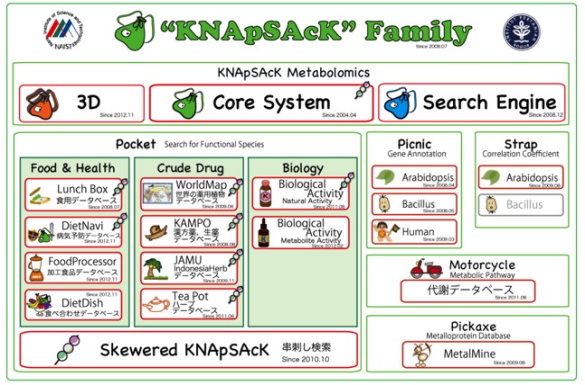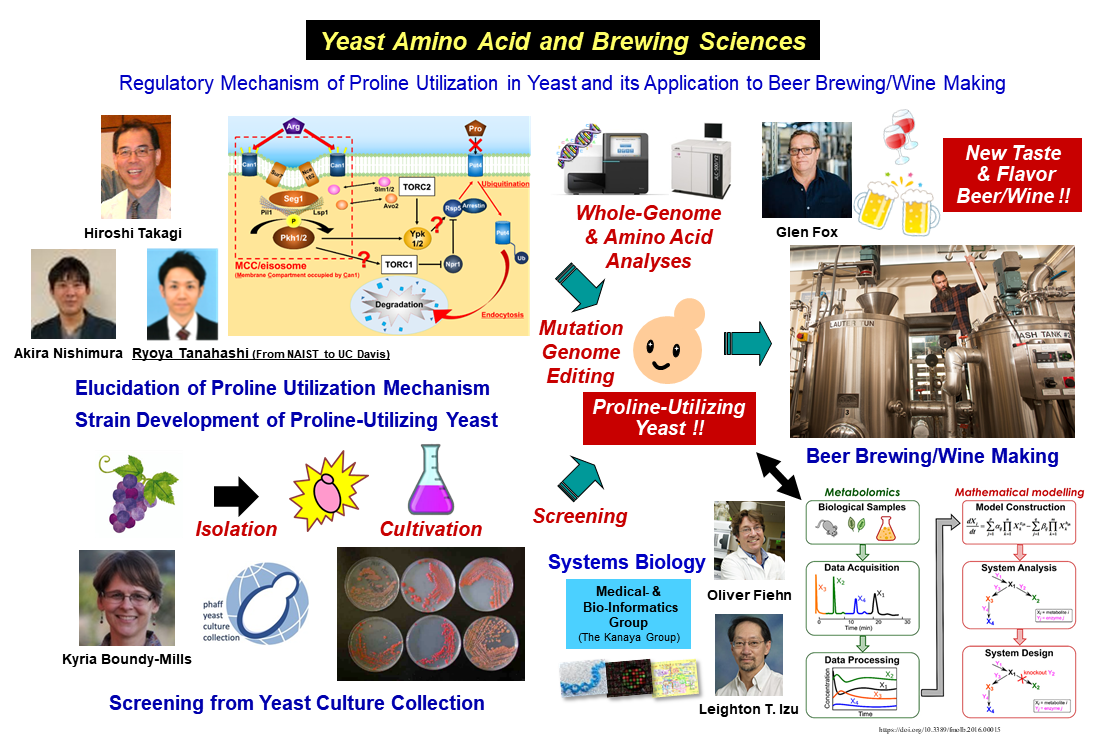Research
Medical- & Bio-Informatics Group
Rapid advance of gene sequencing technology so called “sequence explosion” have provided us genome information of hundreds of organisms, and currently, post-genome studies offer the ability to analyze massive multiomics data, such as transcriptome, metabolome, etc. We integrate these multiple layers of biological information to understand diversity and universality of the system of life.
We also study advanced imaging technologies and information analysis methods of living organisms, from microscopic to macroscopic scales, such as molecular imaging, optical tweezers, image analysis of magnetic resonance imaging, positron emission tomography, etc.
Multiomics Database
We have established a multiomics database named KNApSAcK DB (http://www.knapsackfamily.com/KNApSAcK_Family/). It provides a comprehensive relational database between thousands organisms and biological compounds and how these organisms are used by human as medical or food ingredients.

Bioinformatics
We study integrated and comprehensive information of biological experiments, including genomics, transcriptomics, proteomics and metabolomics, developing statistical analysis of complex networks of biological interactions, in order to understand biosynthesis of various useful compounds in orgasms such as medical plants.
Medical Imaging
Cardiac MRI in clinical imaging for coronary artery, and decision support technology for motion compensation are also the topic of our research. We study diffusion tensor MRI (DT-MRI) and tractography techniques for the analysis of human brain cognitive functions.
Heart Disease
Heart diseases remain the number one killer in many countries. The cardiac system is intrinsically dynamic and complicated to perform an accurately coordinated work to keep the human body alive. The cardiac system is controlled by the electrical system, calcium signaling system and contractile system, which are highly interacting. We construct an interdisciplinary team to facilitate the integrative way of studying the cardiac system so as to develop innovative techniques and therapies to combat heart diseases. Research area includes the followings: cardiac electrophysiology, mechanical stress effect on heart, and combination therapy of heart diseases.
Yeast Amino Acid and Brewing Sciences Group
Proline is a predominant amino acid in wort and grape must, but it is poorly utilized by the yeast Saccharomyces cerevisiae in beer-brewing and wine-making processes. This leads to a nitrogen deficiency during fermentation and proline accumulation in beer and wine, but the inhibitory mechanisms of proline utilization remain unclear. Such study could be promising for the development of yeast strains that can improve the fermentation ability and beer/wine quality by efficiently consuming the abundant proline as the major potential nitrogen source under fermentation conditions.
We conduct research on yeast amino acid and brewing sciences ranging from basic studies (genetics, physiology, molecular and cell biology) to industrial applications for development of brewing yeast. We address the underlying regulatory mechanism of proline utilization in yeast cells and its application to screening and breeding of yeast strains that can efficiently assimilate the abundant proline in wort and grape must under beer-brewing and wine-making processes, respectively.
